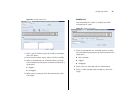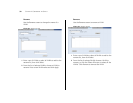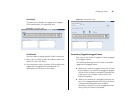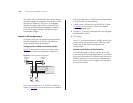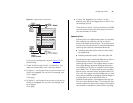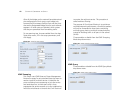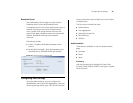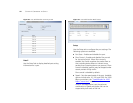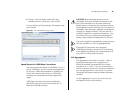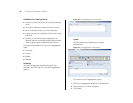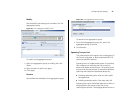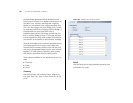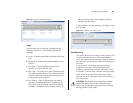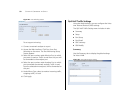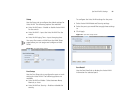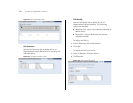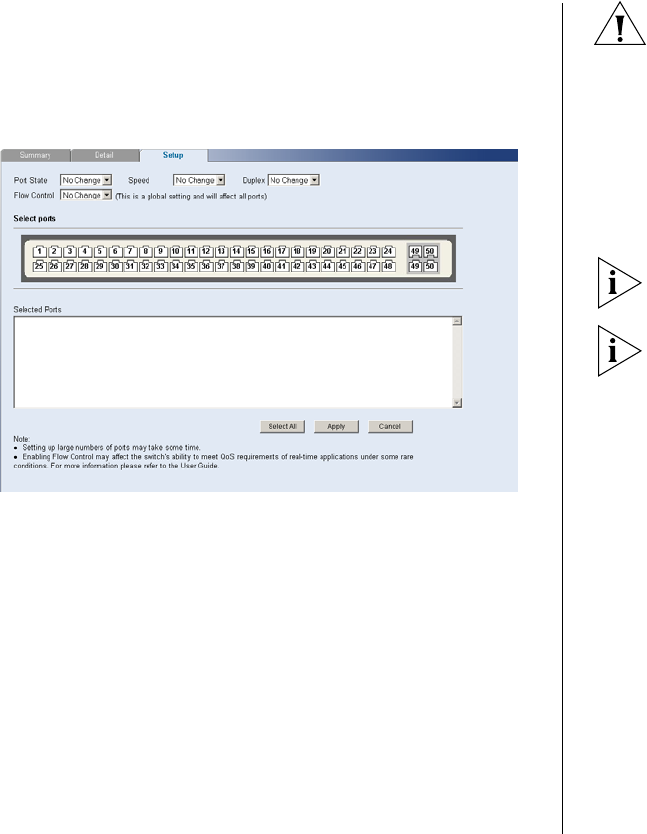
Configuring Port Settings 45
■ Duplex – Sets the duplex mode of the port.
Available options include auto, half, and full.
If you modify any of these settings, click Apply to save
your changes.
Figure 40 Port Administration Setup Screen
Speed/Duplex for 1000 Mbps Connections
You cannot preset the speed to 1000 Mbps. To run a
port at 1000 Mbps, you must enable autonegotiation
for the port. When autonegotiation is enabled, the
Switch will automatically connect at 1000 Mbps,
providing the connected device also supports this
speed.
1000 Mbps connections are always full-duplex.
Half-duplex connections are only available for 10
Mbps and 100 Mbps settings.
CAUTION: Before manually setting a port to
full-duplex, verify that the device connected to the
port is also manually set to the same speed and
duplex setting. If connecting link partners are left to
autonegotiate for a link manually set on this switch to
full-duplex, they will always negotiate to half-duplex,
resulting in a duplex mismatch. This can result in a
significant reduction in network performance. If you
are unsure of how to configure the speed/duplex
setting, simply enable autonegotiation for the port.
You cannot modify the speed/duplex settings of ports
that are members of a trunk or aggregated link.
Supported SFP transceivers only operate at
1000 Mbps full-duplex. Inserting an SFP transceiver
into a gigabit port disables the corresponding RJ-45
port, even if no fiber cable is inserted.
Link Aggregation
Link aggregation, also called “trunking”, refers to
bonding multiple ports into a single group to
effectively combine the bandwidth into a single
connection or a “trunk”. If you are connecting the
Switch to another switch or to an Internet backbone,
you can aggregate links on the Switch to increase
throughput and prevent packet loopback between
switches.
For link aggregation to work, the trunks must be
configured on both ends (switches).



